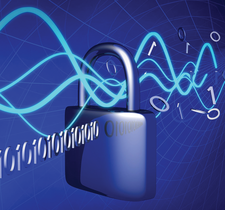Create a bootable USB stick with terminal UI display
Programming Snapshot – Bootable USB with Go

© Lead Image © Pei Ling Hoo, 123RF.com
A Go program writes a downloaded ISO file to a bootable USB stick. To prevent it from accidentally overwriting the hard disk, Mike Schilli provides it with a user interface and security checks.
To test new Linux distributions on real hardware, a bootable USB stick with a downloaded image in ISO format will help with bootstrapping the installation. Rebooting the computer with the stick plugged in will often bring up a Live system that can be played around with to your heart's content, possibly after having to make some changes to the boot order in the BIOS.
How does the ISO file get onto the stick? Ultimately, this is done quite simply with a dd command that expects the ISO file as the input (if) and the device entry of the stick (for example /dev/sdd) as the output (of).
Tools like Ubuntu's Startup Disk Creator make things even more convenient with a graphical UI, but there are some concerns. Under no circumstances would you want the tool to have a bug that accidentally overwrites the next hard disk in the device tree instead of the stick.
[...]
Buy this article as PDF
(incl. VAT)
Buy Linux Magazine
Subscribe to our Linux Newsletters
Find Linux and Open Source Jobs
Subscribe to our ADMIN Newsletters
Support Our Work
Linux Magazine content is made possible with support from readers like you. Please consider contributing when you’ve found an article to be beneficial.

News
-
Two New Distros Adopt Enlightenment
MX Moksha and AV Linux 25 join ranks with Bodhi Linux and embrace the Enlightenment desktop.
-
Solus Linux 4.8 Features Removes Python 2
Solus Linux 4.8 has been released with the latest Linux kernel, updated desktops, and a key removal.
-
Zorin OS 18 Hits over a Million Downloads
If you doubt Linux isn't gaining popularity, you only have to look at Zorin OS's download numbers.
-
TUXEDO Computers Scraps Snapdragon X1E-Based Laptop
Due to issues with a Snapdragon CPU, TUXEDO Computers has cancelled its plans to release a laptop based on this elite hardware.
-
Debian Unleashes Debian Libre Live
Debian Libre Live keeps your machine free of proprietary software.
-
Valve Announces Pending Release of Steam Machine
Shout it to the heavens: Steam Machine, powered by Linux, is set to arrive in 2026.
-
Happy Birthday, ADMIN Magazine!
ADMIN is celebrating its 15th anniversary with issue #90.
-
Another Linux Malware Discovered
Russian hackers use Hyper-V to hide malware within Linux virtual machines.
-
TUXEDO Computers Announces a New InfinityBook
TUXEDO Computers is at it again with a new InfinityBook that will meet your professional and gaming needs.
-
SUSE Dives into the Agentic AI Pool
SUSE becomes the first open source company to adopt agentic AI with SUSE Enterprise Linux 16.

